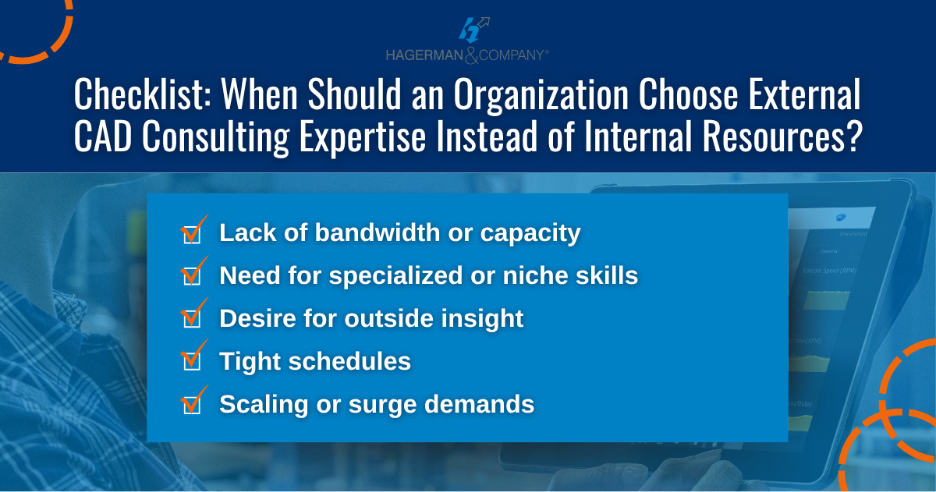
Spreadsheets are a familiar and widely used product data management tool for manufacturing engineers. But what if there’s a better and more efficient solution? What if that solution could help your team maximize the value of your project data?
72.3% of manufacturers use spreadsheets as a primary tool for data management and analysis. While spreadsheets offer a fast and fairly flexible way to manage simple datasets, their limitations become apparent as projects grow. Managing product data this way often results in disconnected files, manual updates, and inconsistent formats. Consequently, critical issues frequently don't surface until teams are deep into the project—sometimes as late as pre-production, when a major design flaw might be discovered. Such obsolete practices waste time and money.
Continue reading to explore the true financial impact of relying on spreadsheets and understand how modern tools can optimize your team’s product data management.
The Cost of Managing Manufacturing Product Data in Spreadsheets
The quality of product information directly impacts project results. It influences team efficiency throughout the process. However, how this data is presented and utilized throughout each stage of the project plays an equally crucial role in achieving project success.
Relying on spreadsheets with limited data structure heightens the risk of errors and compromises project timelines. Engineers lose valuable time manually updating data and tracking changes instead of focusing on critical tasks or optimizing workflows. Moreover, these manual processes often cause data to become outdated or lead to broken links. If these errors go unnoticed, they inevitably create confusion in production, and trigger costly downtime and extensive corrections. There’s much more beneath the surface.
- Spreadsheets that lack proper access controls increase the risk of data loss and unauthorized changes.
- Collaboration and productivity suffer with multiple versions and siloed work.
- Inconsistent formats cause misinterpretation, errors, and frustrating (and expensive) iterations.
Time is money. While spreadsheets remain familiar and easy to use, they are no longer suitable for the demands of the fast-paced and modern manufacturing environment.
PDM Streamlines Manufacturing Information Management
In stark contrast to these spreadsheet-induced inefficiencies, Product Data Management (PDM) software offers secure and centralized access to product data by storing everything in one place. This enables teams to find relevant information and work more efficiently. With a PDM tool, engineers, designers, and manufacturers all share the same up-to-date information. Automated workflows then help keep tasks on schedule, ultimately improving coordination throughout the entire product development process.
Let’s discuss the PDM advantage in detail.
Accurate Multi-CAD Bill of Materials (BOM)
Managing BOMs from various CAD tools can get challenging without the right system in place. A strategically-implemented PDM software helps bring clarity and control to how product data is organized, shared, and updated. Autodesk® Vault® Professional, for instance, brings design, engineering, and manufacturing teams together in a single source of truth, so everyone works from the same up-to-date data. Its integrated BOM tools support multi-CAD environments, helping you generate accurate and structured BOMs to reduce quoting time and prevent costly downstream errors.
Reduced Manual Work Through Automation
With PDM automation, you can eliminate repetitive tasks such as version control, file sharing, and BOM updates. PDM software reduces manual work by automatically tracking file versions, syncing design changes, and updating BOMs when models are revised. It also leverages predefined workflows to route tasks, manage approvals, and control access.
Removing the need for manual interventions allows engineers to focus on high-value processes and substantially reduces the risk of errors.
Improved Collaboration Across Teams
PDM fosters stronger stakeholder collaboration by giving cross-functional teams access to the same centralized data, no matter their role or location. The right PDM software allows engineers, designers, and production teams to work with a consistent set of information, enabling proactive collaboration and minimizing miscommunication and version conflicts that often lead to rework.
Expertly implemented PDM systems enforce role-based access, which maintains alignment among engineering teams while protecting the data throughout the product development cycle.
Built-in Traceability
When multiple team members update the same design files, discerning changes and their authors. Fortunately with PDM, your team can automatically track every design modification and maintain a detailed history of updates.
In essence, built-in traceability improves accountability among stakeholders. It also creates a clear audit trail and supports compliance with industry standards.
Smoother Handoff to Production
As mentioned earlier, time is money. That’s why we can’t afford errors and collaboration issues to push back project deadlines, increase costs, or disrupt the supply chain.
PDM maintains data integrity from design through manufacturing to minimize costly late-stage changes and prevent production delays. Forward-thinking teams even connect PDM with Product Information Management (PIM) tools to make sure engineering data aligns customer-facing product details.
Complex Products Need Connected Data
Spreadsheets can handle small data sets, but as products grow more complex, relying on manual data entry can only cause miscommunication, and errors. So, while spreadsheets are less expensive to set up, they can introduce hidden delays and costs that impact project success. To fully leverage connected data and overcome the complexity, your team should consider a more strategic approach to PDM implementation.
Integrating your PDM software as the foundation of broader Product Lifecycle Management (PLM) system unifies your team, streamlines workflows, and centralizes product data not only during the design phase but throughout the entire product lifecycle.
Break free from development bottlenecks and realize the power of your product data with Hagerman & Company’s PDM and PLM solutions. Accelerate the delivery of superior products through our comprehensive range of services, including:
- Evaluating the most suitable PDM/PLM software and support based on organizational requirements.
- Setting up new PDM/PLM systems and transferring legacy data to streamline workflows.
- Connecting PDM/PLM with ERP, MRP, and other systems for seamless data flow.
- Assisting with transferring Bills of Materials from Autodesk environments to ERP, MRP, or PLM systems.
- Linking Autodesk Vault with Autodesk Construction Cloud for secure file sharing.
- Facilitating user adoption through training, support, and mentoring services.
Ditch the spreadsheets and embrace an agile and more efficient approach to product data management. Contact Hagerman & Company to learn how our expertise, integration, and solutions can help you get the most out of your PDM software and achieve more project wins.





Comments